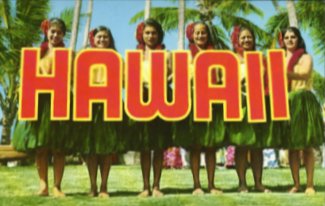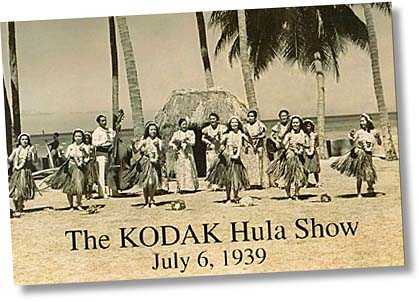Līhuʻe, Kauai (literally translated as ‘cold chill’) dates from the late-1830s when Kaikioʻewa, governor of Kauai, moved his home from the traditional seat of government, Waimea, to the hilly lands overlooking Nawiliwili Bay on the southeastern side of Kauai in the ahupuaʻa of Kalapaki.
He named this area Līhuʻe in memory of his earlier home on Oʻahu. The name, Līhuʻe, was unknown on Kauai before then; the ancient name for this area was Kalaʻiamea, “calm reddish brown place.” (Līhuʻe on Oʻahu is in the uplands on the Waianae side of Wahiawa; Kūkaniloko is situated in Līhuʻe.) (Fornander)
In 1849, Henry A Peirce & Co, a partnership between Charles Reed Bishop, Judge William L Lee, and Henry A Pierce established a suar plantation (on the site Kaikioʻewa chose for it on the Nawiliwili stream (water power was used to drive the mill rollers.)) (In 1859, a new partnership was formed and the name was changed to the Līhuʻe Plantation Company.) (HSPA)
The Plantation had several innovations. “(T)he first important (irrigation) ditch was dug at Līhuʻe, Kauai, in 1851 … other ditches on Maui soon followed.” (Louisiana Planter) In 1859, the first steam engine used to power a sugar mill in Hawaiʻi was installed at Līhuʻe. (LOC)
In 1851, a frame courthouse was built on a site just above Kalapaki Bay and Nāwiliwili Harbor. The Lihue Plantation Store was built in the 1860s on the grounds of the plantation manager’s residence and moved in 1876 to a hill across the mill valley (where the present County Executive Offices are situated.) The store later served as the area’s mail distribution hub.
A cluster of homes and stores around it was the start of the town of Līhuʻe. During most of the nineteenth century, Līhuʻe served as the center of island government. Sugar planting to feed the plantation and mill changed the landscape.
“The country was undergoing the process of denudation. Non-resident landlords, large landholders, have in most cases leased out their lands by long leases to vandal-like tenants, who are making the most of their time and their bargain by cutting down the forests, and supplying the sugar mills, shipping, and even Honolulu with wood.”
“Sixteen years ago, where beautiful kukui groves gladdened the scene, is now a barren plain.” (Pacific Commercial Advertiser, July 27, 1867)
Līhuʻe Plantation expanded in 1910 with the purchase of controlling interest in Makee Sugar Company. Expansion again occurred in 1916 when Līhuʻe Plantation and WF Sanborn purchased the 6,000 acre Princeville Plantation.
In 1922, American Factors, Ltd (AmFac,) successor company to H Hackfield & Co, acquired control of Līhuʻe Plantation Company. The Līhuʻe Mill was one of the longest sugar mills in service in the Islands (1849-2000.)
The Fairview Hotel (initially opened by Charles W Spitz in 1890) was the first full-fledged hotel on Kauai providing rooms and a restaurant. William Hyde Rice’s oldest son William Henry Rice took over the operation in 1894 and eventually changed the name to Lihue Hotel; it grew over the years to 68-rooms.
In those days, an operation had to be self-sufficient and a farm behind the hotel raised cattle, pigs and chickens along with fruits and vegetable grown for the restaurant. After Rice’s death in 1946, the family sold the hotel to Inter-Island Steam Navigation Company; the name was changed to Kauai Inn. (Kauai Museum)
Following annexation (1898,) the Territorial government passed the County Act (1905,) establishing county governments. Līhuʻe became the county seat of Kauai and the County Commissioners held monthly meetings in the 1851 courthouse.
In 1913, the present County Building was erected, the first structure in the territory built expressly to house a county government. Its Chambers have served the Kauai County Council ever since.
That year, a new Līhuʻe Store replaced the old. The County Building and Līhuʻe Store were the earliest buildings on Kauai constructed of concrete and presaged a new era in the development of Lihue. With the completion of the County Building, the 1851 courthouse was razed and a school built on its site.
The school was interchangeably referred to as Līhuʻe High School and Kauai High School. It was the fifth high school in the Territory of Hawaiʻi and the first high school on the island of Kauai. Kauai High sits on a hill often referred to as “Ke Kuhiau” (meaning “high point” – it’s also the name of the school yearbook.) (KHS)
The partially-rock-faced Albert Spencer Wilcox Memorial Library, the island’s first library, was dedicated on May 24, 1924 (Albert’s birthday – it was funded by Emma Mahelona Wilcox in memory of her husband.) (A new library was built in Līhuʻe in 1969 – the Wilcox Building is now the Kauai Museum and home to the Kauai Historical Society.)
Down the hill, construction of the Nawiliwili breakwater began in 1920. This was the first step in creating Nawiliwili Harbor, not completed until 1930. Air fields at Līhuʻe and Hanapepe were constructed and the first airplanes actually flew to Kauai in 1920. By 1929 Hawaiian Airlines established regular flight service. (Strazar)
Kaua‘ made history at this time when it sent the first woman in Hawai‘i to the Territorial House in 1924, Rosalie Keliʻinoi, and the first to the Territorial Senate in 1932, Elsie Wilcox. (Strazar)
During the Depression Era and 1930s, public improvement projects dominated the construction scene in Līhuʻe. Roads were paved and several significant buildings were built.
The area surrounding the County Building developed as the hub of government activities with the construction of the Territorial Office Building (County Building Annex) in 1930 and the County Courthouse in 1938.
Originally the County Courthouse was to be built in the park in front of the County Building; however, public outcry against that location resulted in the construction of Umi Street and the Courthouse on its present site.
Līhuʻe Theater was built in 1931. The Līhuʻe Post Office (1938) was the first and only federally-constructed post office on the island of Kauai (it was expanded in the late-1970s.)
Daily flights led to airmail in 1934 complementing long distance telephone service begun in 1931. During the 1920s and 1930s a belt road connecting main towns was paved, as well. (Strazar)































